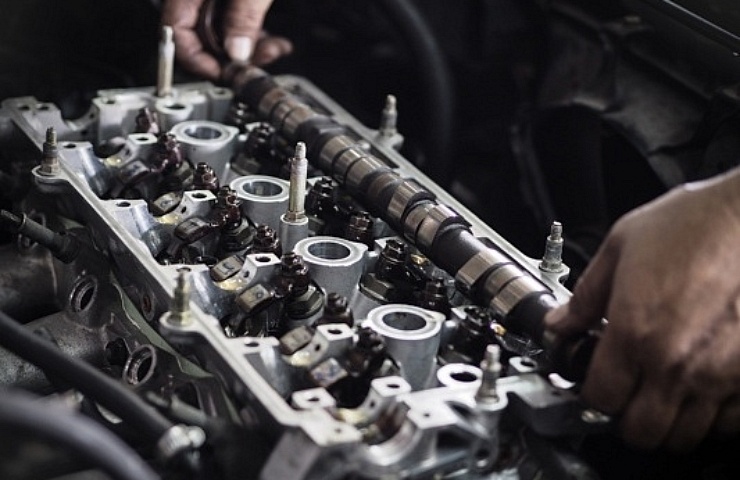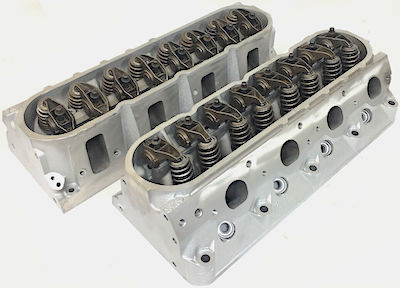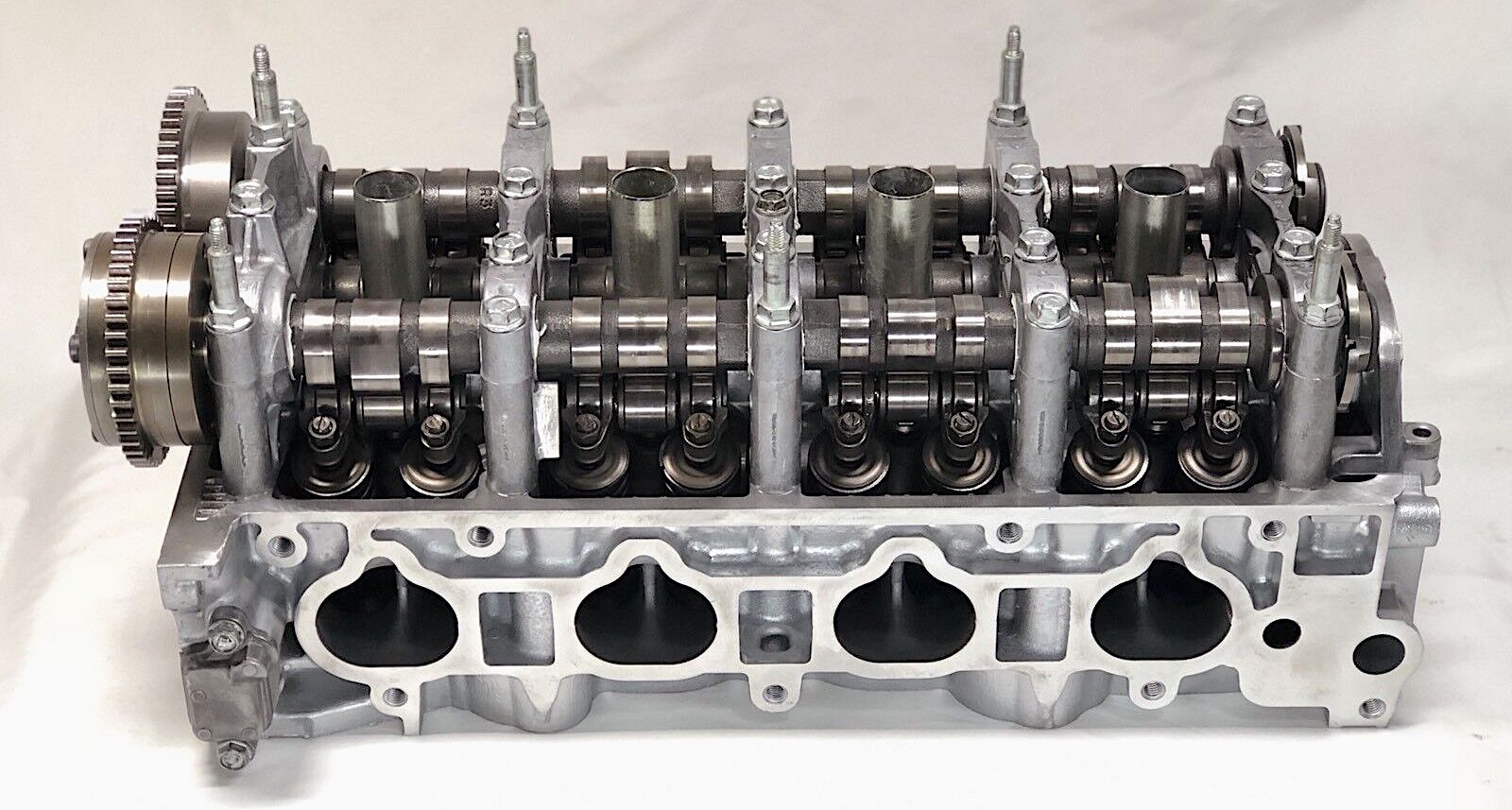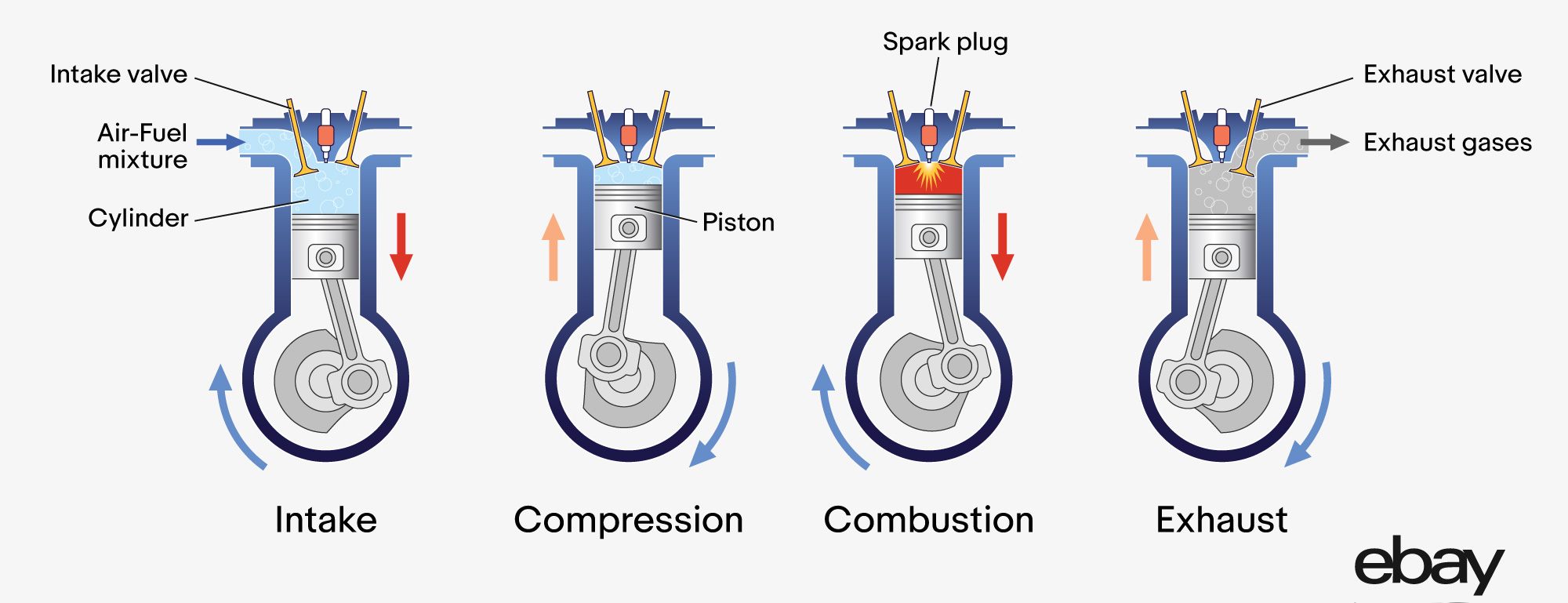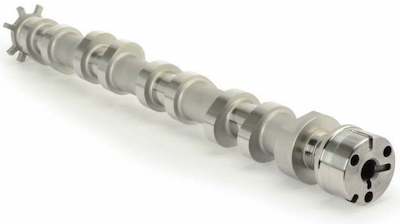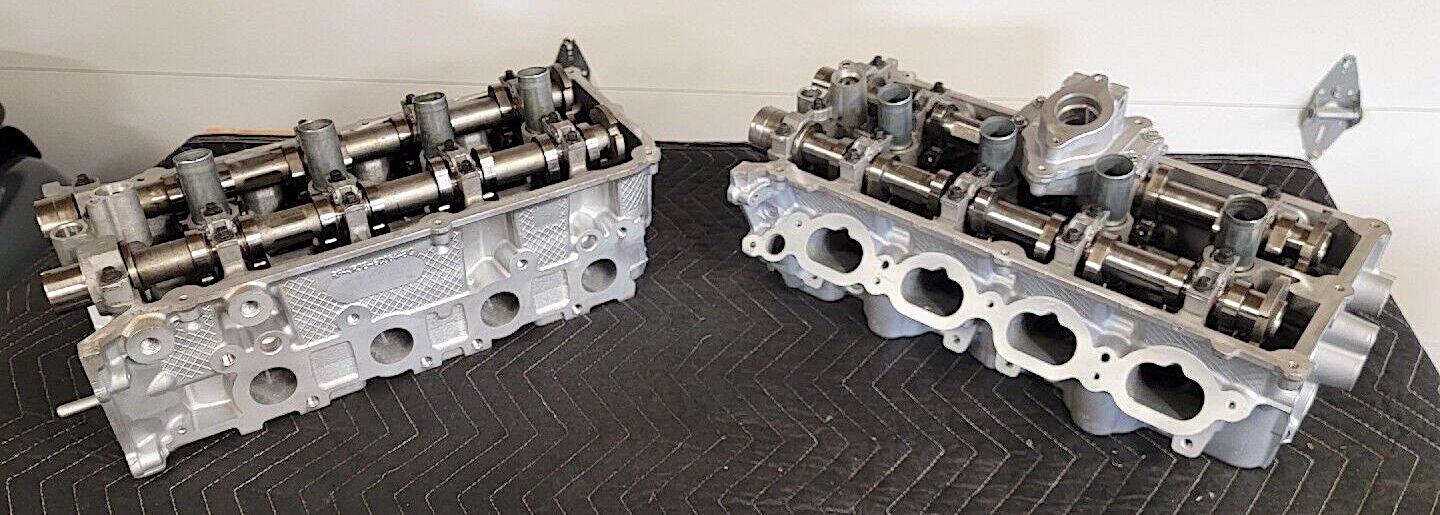Contents
What Is a Cylinder Head?
A vehicle’s cylinder head is mounted to the top of the engine block. The head gasket is located between the two components, designed to seal them together.
The cylinder head creates a space for the spark plugs and the intake and exhaust valves. In engines with an overhead cam layout, the cylinder head also has a spot for the camshaft.
There are numerous passageways—usually called tracts or ports—within the cylinder head. Some of these tracts allow airflow to the inlet valves, while others create a route for the exhaust gasses leaving the motor.
With the cylinder head in place, the tops of the cylinders are sealed to create combustion chambers. Spark plugs stick out from the cylinder head into the combustion chamber to initiate ignition.
The valves atop each cylinder are opened by the camshaft. The intake valve allows air and fuel to mix in the cylinder before it closes. The air-fuel mixture compresses when the piston moves up inside the cylinder. Spark plugs then ignite this compressed fuel.
Read this: All About Camshafts and How They Work
The expanding gasses cause the piston to move away from the cylinder head. Following the combustion stroke, the piston returns toward the cylinder head, allowing the exhaust valve to open so the gasses can escape. The timing belt or chain ensures everything happens at the correct interval.
The cylinder head is responsible for these tasks:
- Sealing the combustion chamber and cylinder block
- Housing the intake and exhaust valves
- Creating the combustion chamber shape
- Dissipating heat produced from combustion
Components
The following components are a part of the standard cylinder head.
- Head gasket – This gasket provides the seal between the cylinder head and engine block. It keeps the coolant and oil from mixing in the tracts. The head gasket is also needed to ensure proper compression in the cylinders.
- Camshaft – The camshaft presses against the valves or rocker arms to let air and fuel in or exhaust gasses out. The camshaft is mounted within the cylinder block if the engine is not of an overhead-cam design.
- Valves – An engine’s valves act as doors that allow air and gasses in and out of the combustion chamber. A four-stroke engine uses at least two valves per cylinder: an intake and an exhaust.
- Valve spring – The valve spring holds the valve in its position.
- Spark plugs – In gas engines, the spark plugs ignite the air-fuel mixture within the cylinder to create power.
- Fuel injectors – The injectors supply fuel to the combustion chamber. Fuel injectors may be mounted directly to the cylinder head or could be within an intake manifold, upstream from the cylinder head.
- Passageways – The cylinder head contains two separate tracts for transporting motor oil and coolant.
Common Cylinder Head Issues
In most cases, cylinder head failure is due to the engine overheating. This usually comes from a coolant leak, head gasket failure, or a restriction preventing coolant flow.
The metal heads expand as the engine rapidly heats up and contract as the engine cools. This can lead to cracks in the cylinder head. The vehicle should be able to handle rapid cooling and heating, but this problem is more common when the cylinder head and engine block are made from two different materials. For example, the vehicle may have a cast iron engine block and an aluminum cylinder head. As the metals contract and expand at different rates, cracks can occur in the head.
When the cylinder head cracks or fails, you may notice one or more of the following symptoms:
- Leaking coolant
- Coolant and oil mixing in the engine
- A sweet smell from the engine or exhaust
- White exhaust smoke
- Overheating engine
- Bubbles in the radiator
- Rough idle
- Engine misfire
Additionally, if the coolant seeps past the gasket and contaminates the engine oil, you will see a milky substance under the oil cap. It usually has the thickness of a milkshake.
Read this: Identifying Common Engine Leaks
How to Fix a Bad Cylinder Head
Depending on the severity of the damage, it may be possible to repair the crack so you can avoid a complete replacement. Here are the options to consider.
- Sealant – If the cracks or leaks in the cylinder head are small, you may be able to use a bottle of sealant. This can lead to clogs in the system or further damage, so some consider it a last-ditch effort before replacing the cylinder head.
- Crack pinning – Also known as crack stitching, this affordable option helps seal up small cylinder head cracks in aluminum or cast iron, and it doesn’t require a lot of tools. Holes are drilled on either side of the crack, which helps prevent it from spreading further. Overlapping pins are then installed along the crack to hold both sides in place. Pin size is determined by how severe the cracks are. Minor cracks may only need smaller pins, while more extensive damage will require larger pins. The pattern also depends on the location of the cracks.
- Welding – Welding is a more advanced method that can be used with severe cracks. The crack is filled with molten metal, which helps restore the material’s integrity. This fix doesn’t just hold the crack together; it should repair it completely.
- Replacement – If all else fails, the cylinder head should be replaced. This is one of the more expensive options, but ensuring that the engine is repaired and safe to drive is often preferable.
Average Replacement Cost
Once you know there’s a problem with the cylinder head, it’s best to stop driving and have it fixed. With coolant leaking or a failed gasket, the engine will overheat. Significant engine damage is sure to follow. It’s much cheaper to replace the cylinder head than to add an engine rebuild or replacement on top of the repair cost.
The cost to replace a vehicle’s cylinder head depends on what type of car you drive and who performs the labor. If you do it yourself, the cost may only be around $2,000. Professional labor would add around $1,500.
The cylinder head is meant to last the engine’s lifetime, so it’s not a common replacement. By maintaining the vehicle, you can prevent cylinder head failure. It’s essential to perform all of the necessary oil changes and to fix any coolant leaks as they occur so the motor doesn’t overheat.
Shop now for cylinder heads
